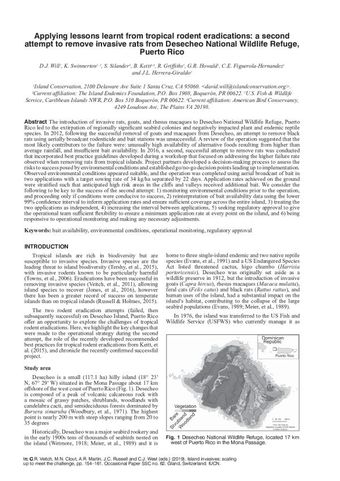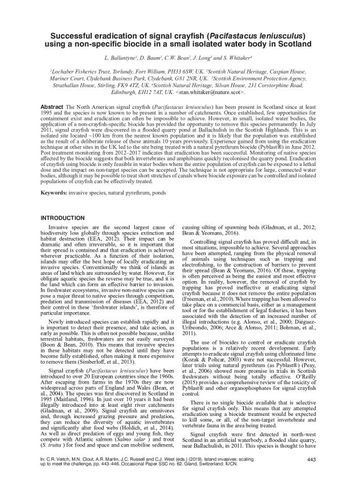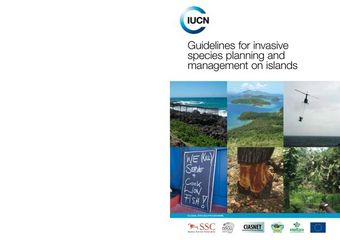Eradication programmes complicated by long-lived seed banks: lessons learnt from 15 years of miconia control on O'ahu Island, Hawai'i
- Description:
- The invasive tree Miconia calvescens (Melastomataceae) is a priority for control on the Hawaiian Island of O?ahu due to its potential to replace native ??hi?a (Metrosideros polymorpha, Myrtaceae) forests and degrade watershed function if allowed to establish. The O?ahu Invasive Species Committee (OISC) is attempting to eradicate this species from the island of O?ahu. OISC uses a bu?er strategy based on estimated seed dispersal distance to determine the area under surveillance. This strategy has worked well enough to suppress the number of trees reaching reproductive age. The number of mature trees removed annually is now less than the number initially removed when the programme started in 2001. In 2016, just 12 mature trees were removed from 54.71 km2 surveyed compared to 2002, when 40 mature trees were removed from 8.26 km2 surveyed, a 96% drop in mature trees per square kilometre surveyed. However, miconia has a long-lived seed bank and can germinate after 20 years of dormancy in the soil. Funding shortages and gaps in surveys due to refusal of private property owners to allow access have resulted in some long-range extensions. OISCs results suggest that seed bank longevity is an important factor when prioritising invasive species risk and that allocating more resources at the beginning of a programme to eradicate a species with long-lived seed banks may be a better strategy than starting small and expanding.
- Display date:
- 2019
- Collections:
- Secretariat of the Pacific Regional Environment Programme (SPREP)
- Publisher:
- International Union for Nature Conservation (IUCN)
- Content partner:
- Secretariat of the Pacific Regional Environment Programme (SPREP)
- Availability:
- Not specified
-
Copyright status: All rights reservedFind out more about what you are able to do with this itemThis item is all rights reserved, with means you'll have to get permission from Secretariat of the Pacific Regional Environment Programme (SPREP) before using it. For more information, please see our use and reuse page.What can I do with this item?Non-infringing useNZ copyright law does not prevent every use of a copyright work, and this item may be hosted by an international institute or organisation. You should consider what you can and cannot do with a copyright work.No sharingYou may not copy and/or share this item with others without further permission. This includes posting it on your blog, using it in a presentation, or any other public use.No modifyingYou are not allowed to adapt or remix this item into any other works.No commercial useYou may not use this item commercially.
Related items
Welcome and warm Pasifik greetings
The information on this site has been gathered from our content partners.
The names, terms, and labels that we present on the site may contain images or voices of deceased persons and may also reflect the bias, norms, and perspective of the period of time in which they were created. We accept that these may not be appropriate today.
If you have any concerns or questions about an item, please contact us.


